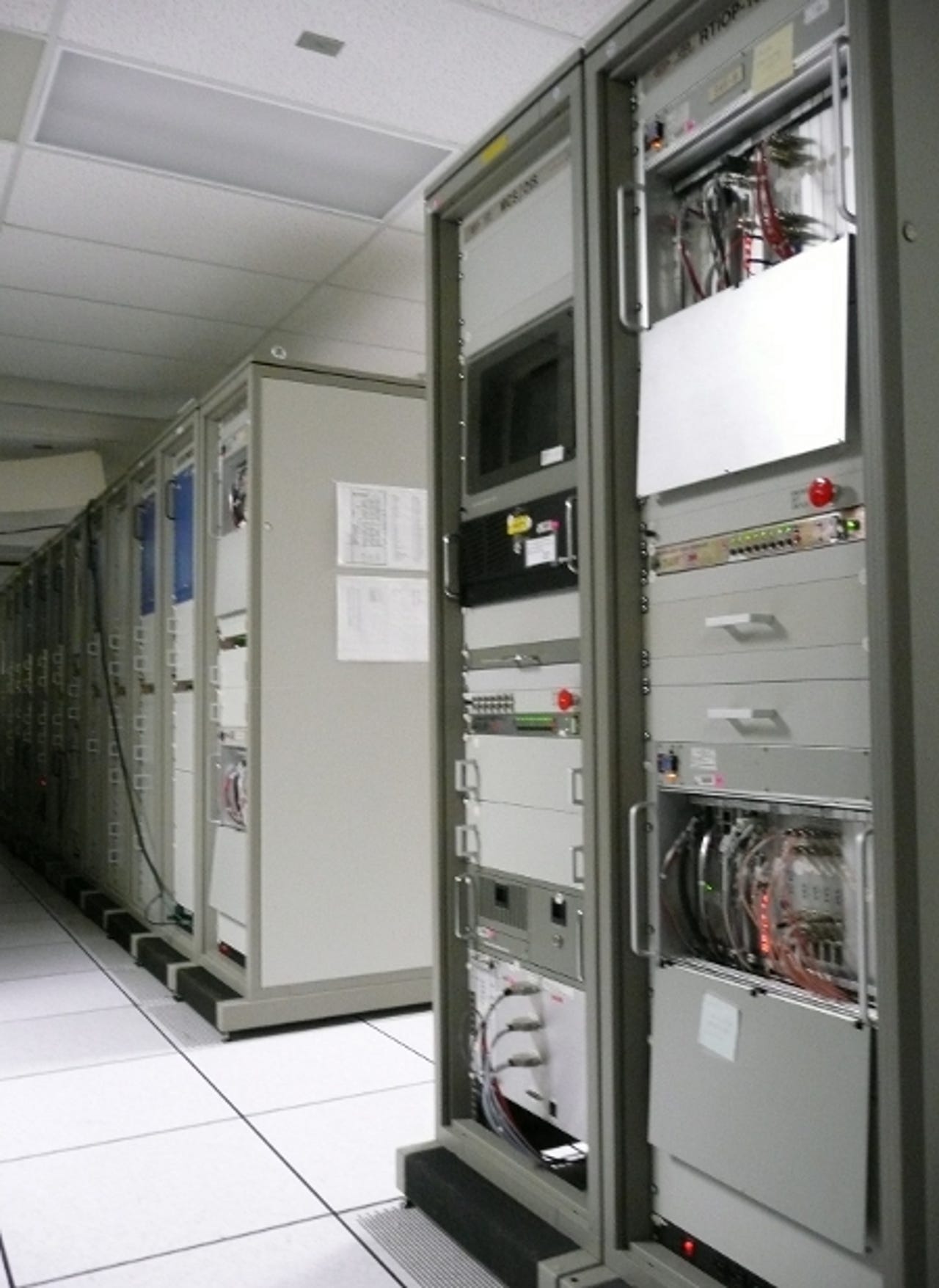Photos: Nasa's space station computing centre


The final stop for space-bound software
Hidden away in a nondescript building in Houston, Texas, is a duplicate set of the computing systems found onboard the International Space Station (ISS).
The building houses the ISS software development and integration laboratory - a facility run by Nasa and aerospace company Boeing. The lab is the last stop for software before it's uploaded to the station.
The lab, seen here, serves several purposes. It develops and checks new station software, making sure that the code works on the station's hardware. The lab also helps to resolve software problems experienced onboard the station by reproducing them on the ground.
Software is first developed in the prime software production facility, before being checked in the software verification facility and subsequently integrated with duplicate station hardware in the software integration laboratory.
Once new software is approved, it is packaged into software builds and sent on to Nasa's mission control or Kennedy Space Center in Florida.
Typically, new code for the station takes a year to produce, and undergoes four months of bug testing and three months of checking how it works with station hardware.
Barrett Counts, a Boeing engineer working on hardware and software integration in the lab, told silicon.com: "This is the last stage where equipment is checked off before anything takes off to orbit. We are as close to the ISS as anywhere on earth."
This computer terminal is the same as one used to control a robotic arm onboard the ISS.
The lab runs new software on the terminal to check the code will work properly in orbit.
The three upper displays seen here show video feeds from a camera on the arm, allowing crew members to use the joystick to steer the arm to its target.
The station's main robotic arm is used for a wide range of purposes, including station assembly, maintenance and anchoring astronauts during spacewalks.
Check out a mock-up of the International Space Station used by Nasa to train astronauts in Photos: Inside Nasa's Space Shuttle and the International Space Station.
Pictured here is one of the space station's motor berth controllers, which attach spacecraft to the station during the docking process.
The device controls the automated bolts that secure visiting spacecraft to the space station.
See a photo tour of Nasa's Mission Control Center at Photos: Inside Nasa's Mission Control Center.
This is the ISS power lab, where Nasa has built a simulation of the systems that control the routing of electrical power around the station.
The lab simulates power management onboard the station, from electricity generation by the solar arrays to its distribution.
This machine simulates the movement of the International Space Station so that the computer systems that keep the station stable can be tested.
It mimics the roll, pitch and yaw of the station to test whether the station's guidance, navigation and control (GNC) software, as well as its rate gyro assemblies, will work properly in orbit.
Rate gyro assemblies help keep the station stable by detecting movement and feeding information to the GNC software, which can then compensate for destabilising movement by firing propulsion systems.
This is one of the S-Band antennas used onboard the station to communicate with the ground.
This equipment is used to control transmission of video and audio from the space station.
Pictured above is a close-up of the GUI on the laptops used by the crew to access the station's command-and-control computers.
Here, the GUI shows an overview of the station systems, with buttons around the edge of the screen allowing the crew to navigate through schematics of the station's systems. For example, the crew can click icons such as a lightning bolt to access power systems or a thermometer to access temperature systems.
Astronaut Clayton Anderson, who spent five months on the space station, recently talked to silicon.com about how the crew of the station used the IT onboard. For more, read the full story How Nasa astronauts use IT on the International Space Station.